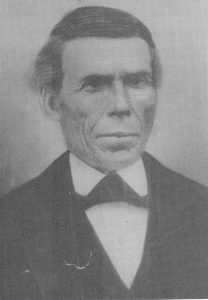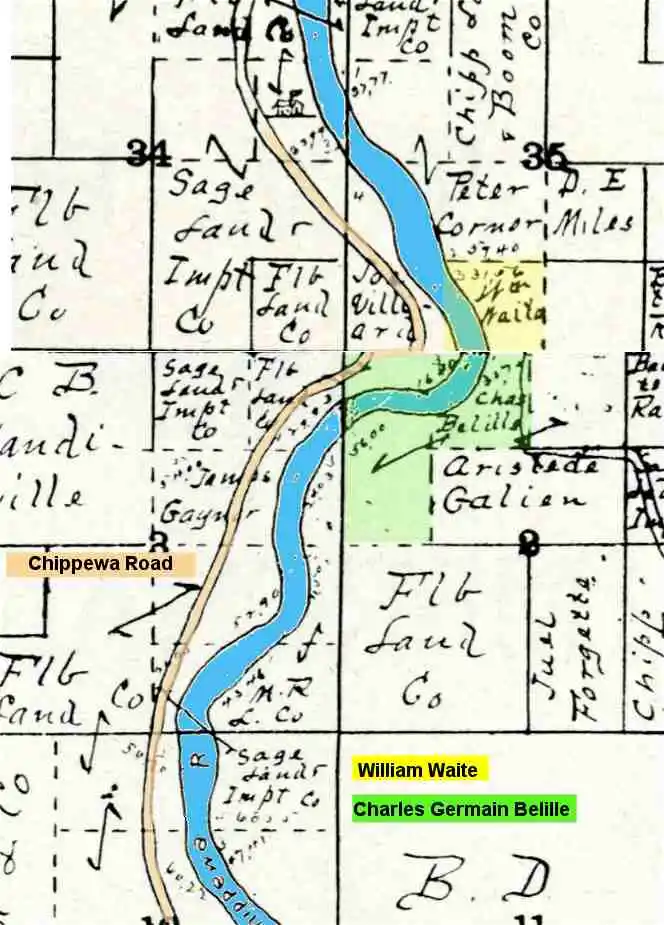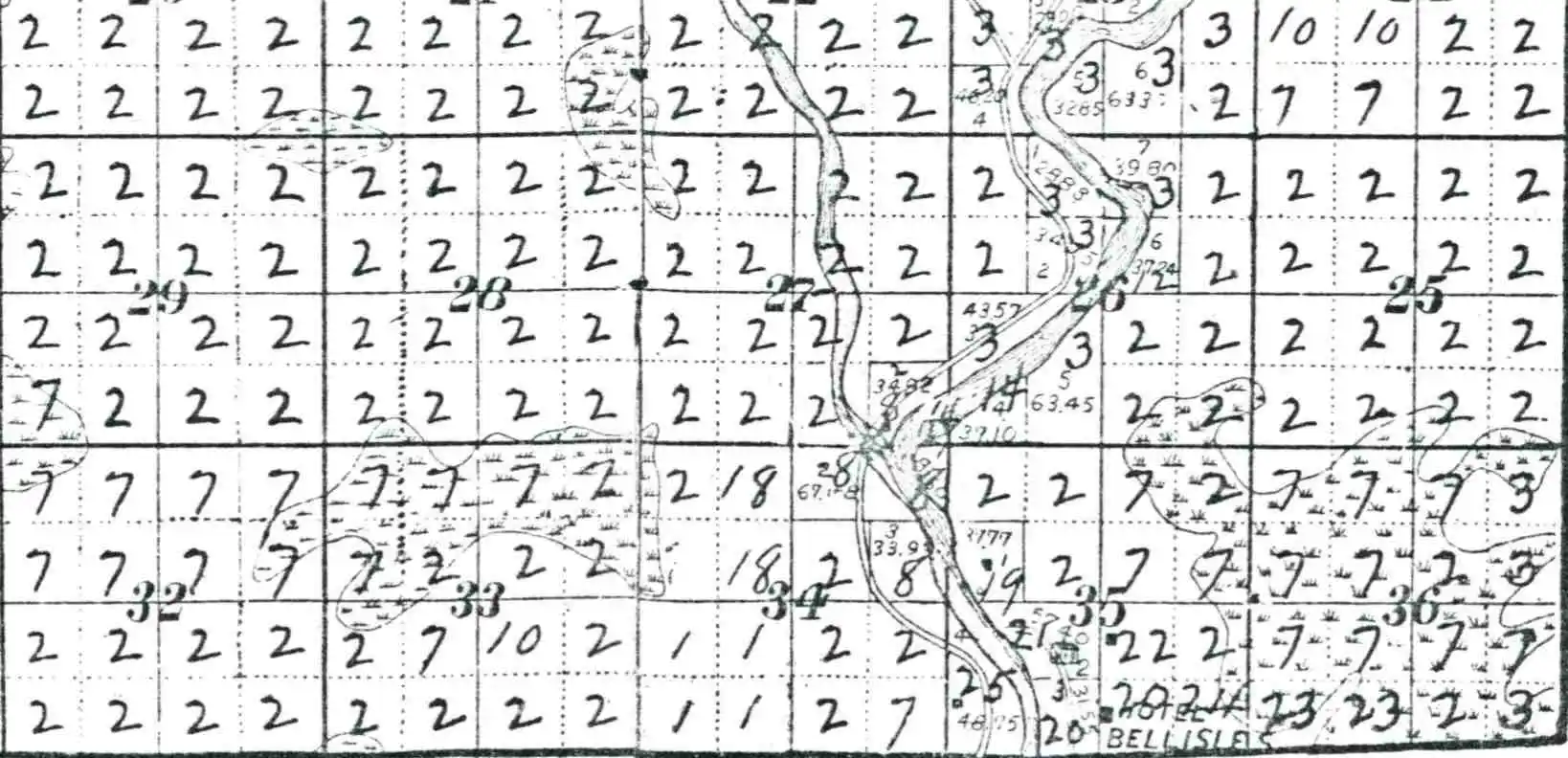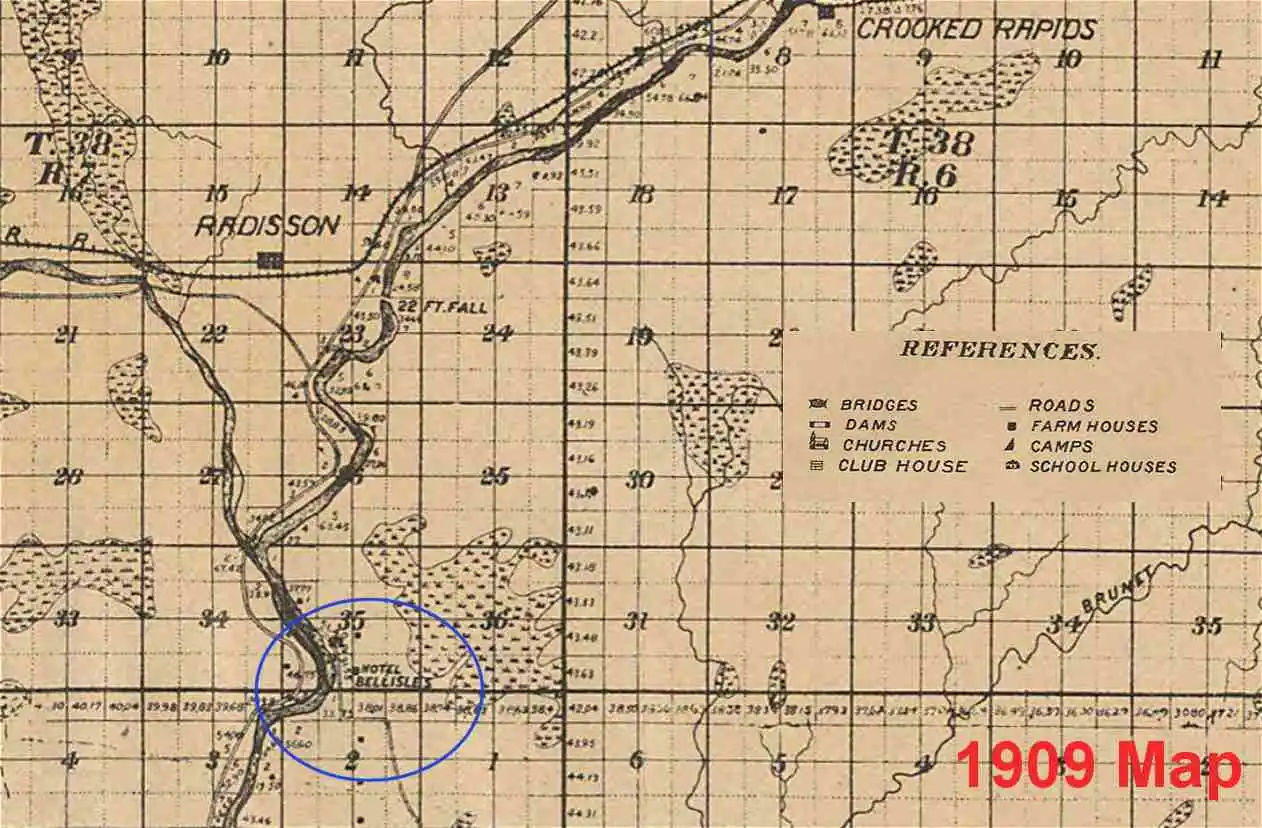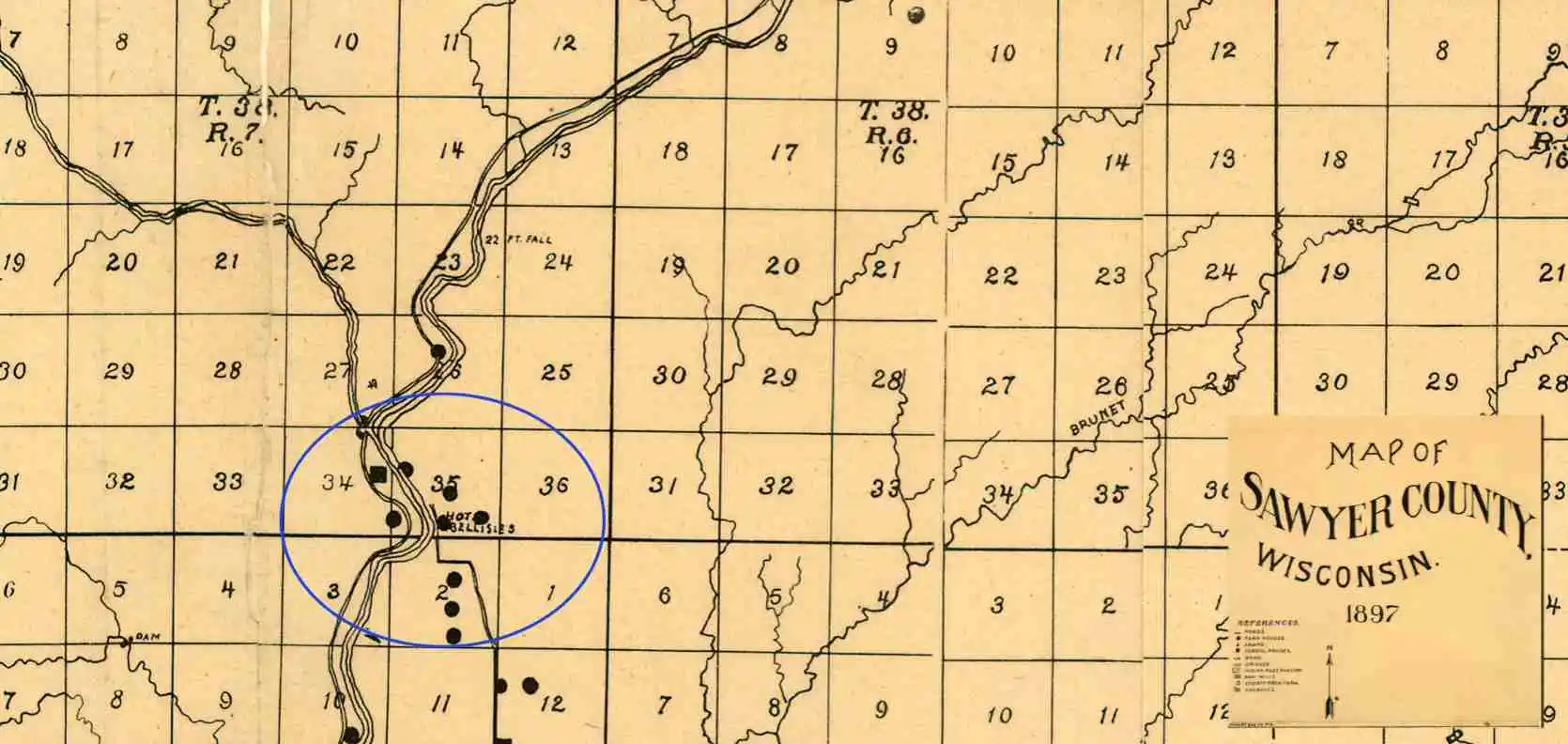Belille Hotel / Trading Post
Charles Belille
The first white settler in the Upper Chippewa Valley was a French Canadian called Charles Belille. He came to Northern Wisconsin as a paddler in one of the big birchbark canoes used by the fur companies. These big cnaoes each carried one hundred men. He came down the old fur traders’ route from Quebec up the St. Lawrence river and through the Great Lakes, bringing a British official to inspect the Lake Superior region which was then very little known. Belille lived a La Pointe for three years, and while there the stories of the traders and Indians about the country to the South along the Chippewa river filled him with the desire to go there. In 1835 or 1836, he came sourth with a few Indians to Lac Court Oreilles, and then down the Court Oreilles river to the Chippewa river. He wintered at the juncture of the Court Oreilles and Chippewa rivers, trading meantime with the Indians. He married a Chippewa Indian girl name Esther Crane, and about 1840, from wipsawed lumber and pine shakes, he built the first house in this part of Wisconsin, on the east bank of the Chippewa river about a mile below the juncture of the Court Oreilles with the Chippewa. This building still stands near the Catholic church in section 2-37-7.
Belille was a big, tall, angular man, and remarkably at strong. He was honest in his dealings with the Indians, and they in turn admired and respected him. Belille had no education, and was unable to read or write. His own language was French, but he early learned the native language of the Chippewas. In this he was very unusual, for few whites have ever mastered the Chippewa tongue. Belille spoke English brokenly, and was well liked by all with whom he had dealings.
Belille was more of a trader than a farmer. He trapped a little, but most of his time he spent near his dwelling, which he operated as a trading post with the Indians. His wife was a great help to him in this, for she being an Indian herself, understood their ways.
Each spring, Belille would make the trip to Chippewa Falls to dispose of the furs he had bought of the Indians, and to bring back the supplies for the next year. The trip was made in an enormous dugout canoe which Belille had constructed with the aid of some Indians. The dugout was made of two big white pine logs hollowed out and fastened side by side so as to form a big nearly flat-bottomed boat. He could carry as much as two and a half tons in the boat in a single load. The boat was propelled by Indians, who pushed it forward by means of long poles. It is said that Belille paid these Indian boatmen a pint of whiskey a day besides their board. They got half the allowance in the morning and half in the evening.
Belille, so the story goes, would sit in the middle of the dugout with a large umbrella to shade him from the sun, and would direct the Indians at their work.
Chippewa Falls was only a frontier village at that time, one or two small sawmills, a couple of stores, and a number of shacks where the mill hands lived. It (illegible) Belille (illegible) to have attention shown him so as soon as he reached the town, he would go to the biggest saloon and order drinks for every man in town. Word was sent to the sawmills which would have to shut down, and a holiday was declared. Belille played the part of host to the entire town. Each spring they would took forward to his coming and great was the rejoicing when news came that Belille and his crew had come into town. Flour, ammunition, tools, and clothing occupied most of the cargo for the return trip. Whiskey, too, was taken, usually several barrels of it, it costing only forty cents a gallon then.
At trust, Belille had only a small area of the forest cleared away and under cultivation. Where was just enough for his garden and some potatoes. But when the lumbermen in their northward march against the timber reached this vicinity, they offered fabulous prices for hay and potatoes, and other farm crops. The nearest base of supplies for these lumberman was Chippewa Falls, and by the time hay was hauled from there to Belille’s Falls, it was worth a lot of money. Belille used to receive fifty dollars a ton for hay and two dollars and a half a bushel for potatoes. These prices stimulated him to get more land cleared, and Bellile hired all the Indians he could get to help increase the areas of cultivated land.
Belille was married three different times, each time his wife was a Chippewa Indian. Altogether he had nineteen children. Many of these children, together with their families, are now living in Southern Sawyer County. Belille died in 1900, when just about one hundred years old. [Source: A Short History of Southern Sawyer County, William Noble Clark & Margaret M. Clark, The Wisconsin Colonization Company, Eau Claire, Wisconsin, 1920]; transcribed by Angie Lietzau
William Waite
The second white settler in Southern Sawyer County was William Waite, also a French Canadian. He came in 1859, and located on a homestead adjoining the Belille place.
He married Esther Belille, one of Belille’s daughters. Waite was a partner of Belille in many of the latter’s enterprises, especially the logging operations in which Belille afterwards engaged.
Belille and Waite were the first men to cut logs up the river from Belille’s Falls. Everybody said that it could not be done, that the logs would jam in the falls, and would be broken to pieces. But Belille demonstrated that it could be done.
Many of Waite’s children and grandchildren are still living near the old homestead. [Source: A Short History of Southern Sawyer County, William Noble Clark & Margaret M. Clark, The Wisconsin Colonization Company, Eau Claire, Wisconsin, 1920]; transcribed by Angie Lietzau
Storys above From: genealogytrails.com/wis/sawyer/bios-pg001.html#charlesbelille
Share this Story
Other Historical Places


